Luckily I feel a bit better again. I got very sick, yesterday afternoon, after we had put up the tents. Vomiting. Diarrhoea. Ate something that didn’t agree with me, but violently didn’t agree. I was not the only one, another in the group had the same. But both of us are recovering well, thank you.
The nomads we camp in between are Fulani people, herders that surround the edge of the Sahel. There are several groups, with different names, in Chad, some of which manage to travel over 700 km a year, from north to south, where the water is in the dry season, back up north again. They travel with everything they have, which is not much, as we saw yesterday. And with their cattle, of course.
We are heading back to the main road. And then we find out where all those herds of cattle went to, that we saw passing yesterday. On the sand banks along the main river a temporary nomad village has been established, with much bigger huts than we have seen so far. The sand around the huts has been neatly raked, to create some living space. And on the rest of the sand banks the cattle has been accumulating, literary thousands of cows, in individual groups belonging to different families. It is an incredible sight. But it gets better. At about the time we arrive, the first herds have started to move out again, for a day’s grazing on the plains. Mostly small boys, with long sticks, are leading the cows away from the village and the river. From across the river, where we see many more huts, other herds are wading through the shallow water, to this side. Impressive. And in fifteen minutes, all have gone again, spread out over the vast savannah away from the camp.

and this guy had the time of his life: reception committee with cameras waiting on the side of the river
In Mondou we stop to fuel. More importantly, the fuel station has a small super market. With biscuits. With cold drinks. With all sorts of goodies we have been lacking the last week. And with digestive cookies, good for recovery from stomach upset.
To Cameroon
It is another three hours’ drive to the Cameroonian border, through now familiar landscape, getting more undulated, with villages, shrubs and trees. And then there is the border. Where we spend the next four ours, two to get permission to get out of Chad, and two to get into Cameroon. To get out, we do pay our first – as far as I know – ‘formalities’, 5000 CAF (Central African Francs) per person. Quite openly, to the officials in the passport office. No receipts issued. We are also checked on Corona certificates and on our body temperature. Mine is 37.9, and the health official says that I will have to stay behind. I ignore him, just walk off, Sofia gives him some biscuits, and all is well again. Reassuring.
Once across the border the landscape doesn’t change much. Of course not. But the difference in villages is striking. These are the same people, all Kotoko, but in Cameroon the thatched roofs have largely been replaced by corrugated iron. So it is not a matter of comfort – thatched roofs being much cooler than tin roofs -, but a matter of money: tin roofs are more expensive, but do not need to be replaced every two or three years.
Because of the border delays we are not going to make it to Ngaoundere. We decide to overnight in Touboro, 30 km further, some of us in what is poetically called the Pavilion Printemps, the others in the equally poetic Paradise Hotel. It is very basic, there are cockroaches, the doors don’t close well. But it has a shower! And a ceiling fan!
next: to Ngaoundere
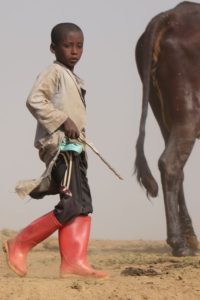
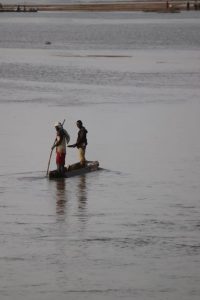
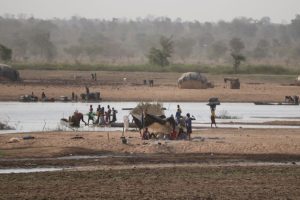

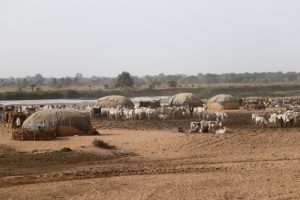
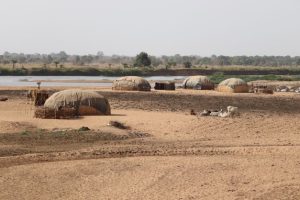



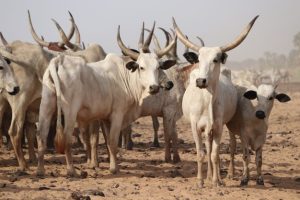
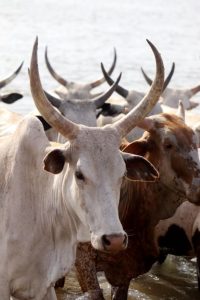
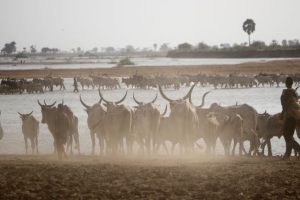
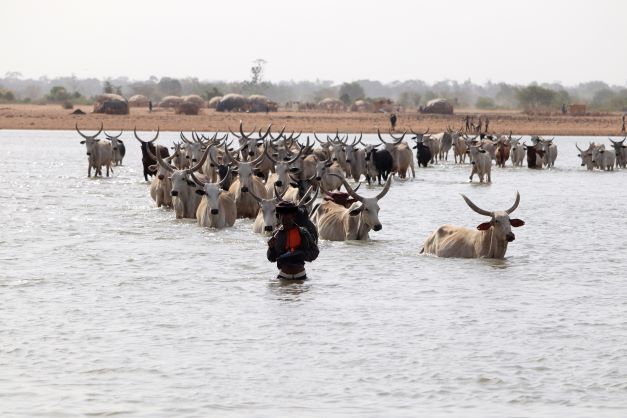
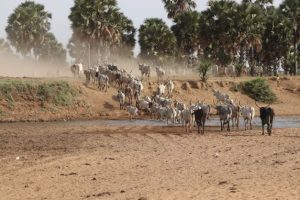


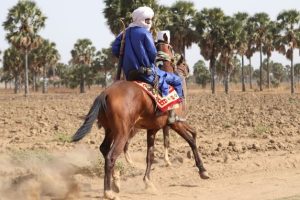
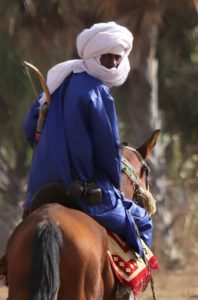
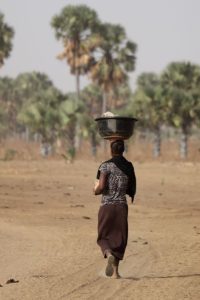
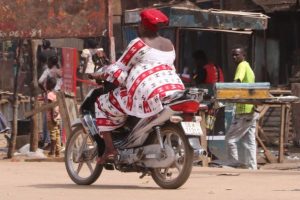











I’m glad you are feeling better !
Both of you have seen a lot of cattles moving ???